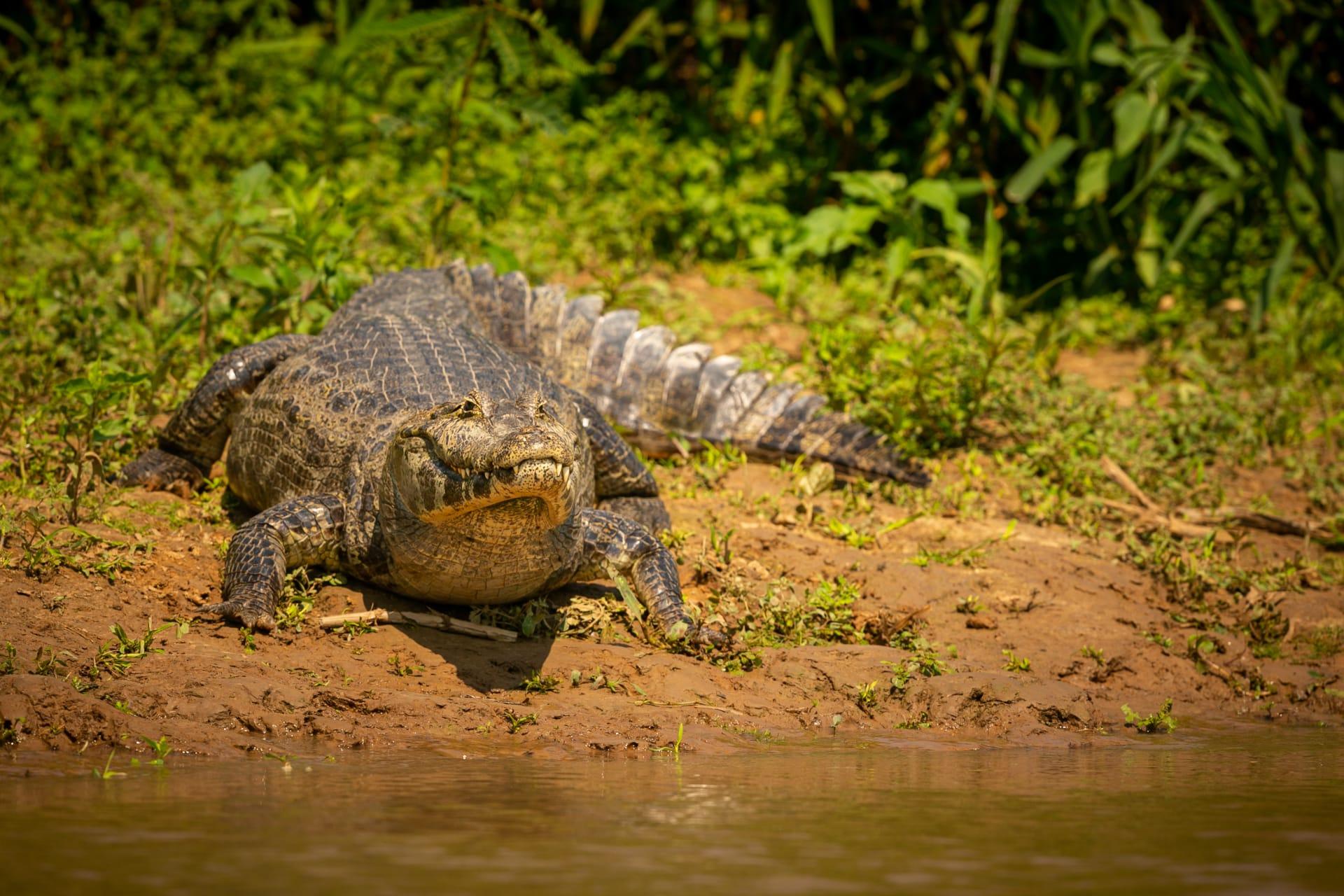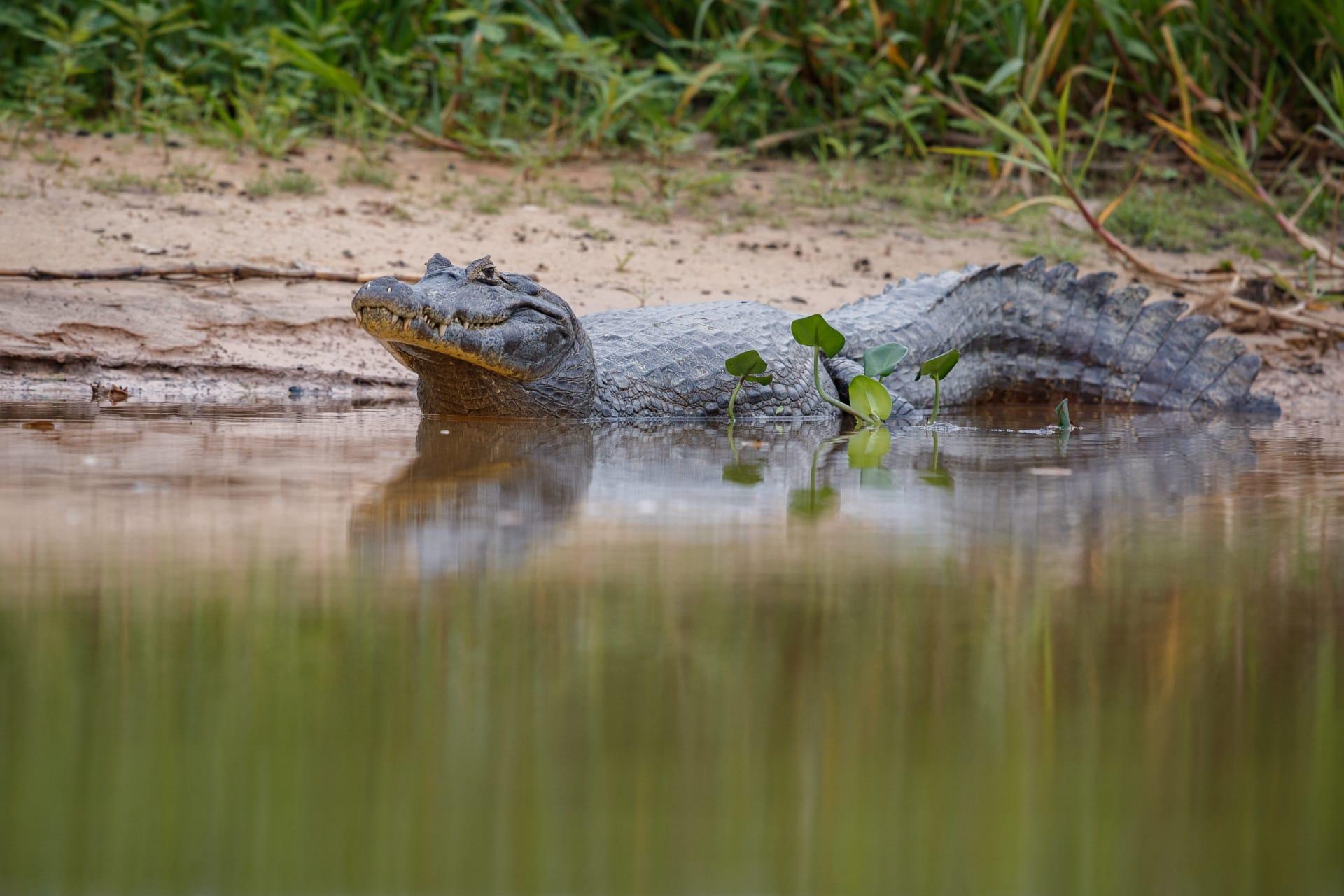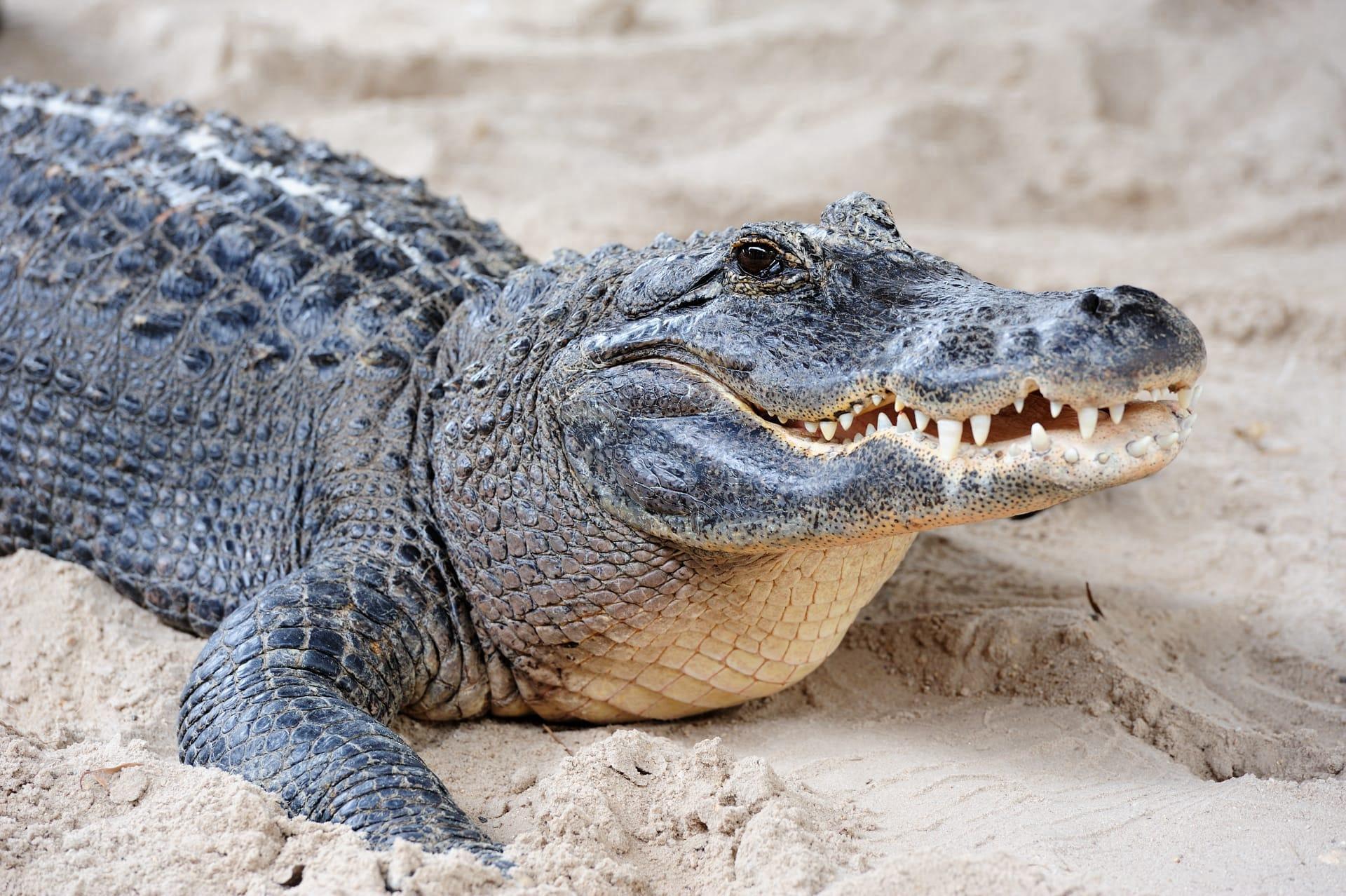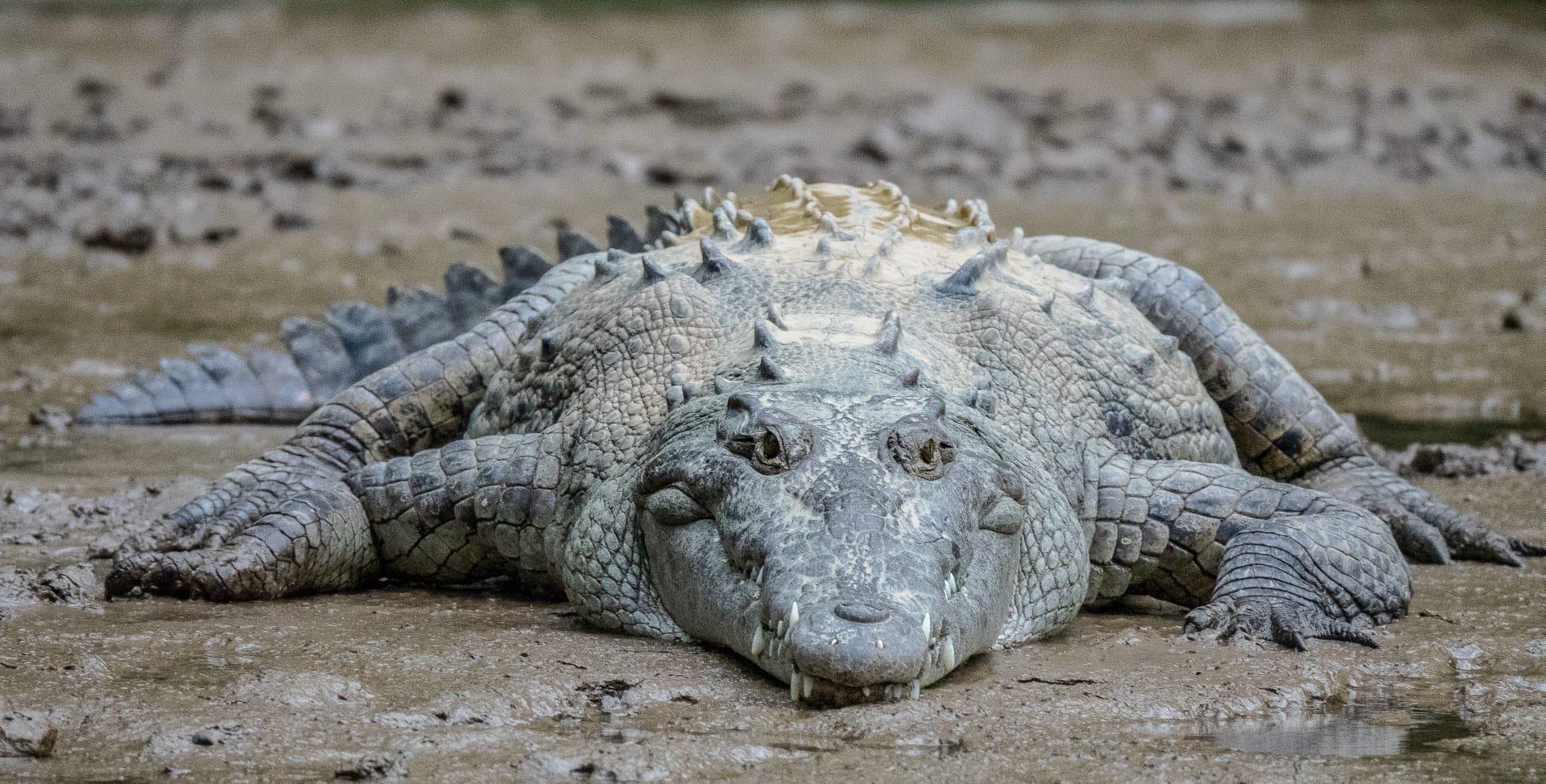American Alligator
- Home /
- Mini Encyclopedia /
- Animal /
- American Alligator
1
The American Alligator, scientifically named Alligator mississippiensis, is a fascinating species belonging to the family Alligatoridae. As a reptile, it's closely related to crocodiles and caimans, but it's uniquely adapted to its environment. The American Alligator is distinguished by its broad snout, which is wider and shorter than that of crocodiles, making it a distinct member of its family. Its dark, rugged hide is composed of bony plates called osteoderms, providing protection and aiding in thermoregulation. Adult males can reach lengths of up to 15 feet, with females being slightly smaller, typically around 9.8 feet. They possess powerful tails, which account for half of their body length, aiding in propulsion through water.
The American Alligator is predominantly found in the southeastern United States, with a range extending from North Carolina to Texas. They are most populous in Florida and Louisiana, which combined house over a million alligators. These reptiles thrive in freshwater environments, such as swamps, marshes, rivers, lakes, and ponds. Their distribution is closely linked to their need for warm climates, as they are ectothermic, relying on external sources of heat. During colder months, they are known to brumate – a form of hibernation – in burrows or dens they excavate along water bodies. Their presence in these areas is vital to the ecosystem, playing a significant role in the balance of their natural habitat.

2
Question: Do American Alligators often attack humans?
Answer: Contrary to popular belief, American Alligators are not commonly aggressive towards humans. While there are instances of attacks, they are relatively rare and often result from provocation or the alligator feeling threatened. American Alligators typically feed on fish, turtles, various mammals, birds, and other reptiles. They are ambush predators, relying on stealth rather than speed, and are not inherently inclined to attack large animals like humans. However, it's crucial to exercise caution and respect their space, as they are powerful creatures. In areas where humans and alligators coexist, educating the public about alligator safety and behavior is key to preventing unnecessary confrontations and maintaining a healthy coexistence.

3
The American Alligator has several intriguing survival strategies. Firstly, their ability to regulate their body temperature is essential. As cold-blooded animals, they bask in the sun to warm up and retreat to water or shade to cool down. This behavior is crucial for their digestion and overall health. Secondly, their powerful jaws, equipped with numerous sharp teeth, are perfect for capturing prey and defensive actions. Remarkably, they can replace their teeth throughout their lifetime, ensuring they always have functional dentition. Additionally, alligators are known for their 'death roll' – a technique used to subdue and dismember prey. In terms of reproduction, female alligators build large nests of vegetation, where they lay up to 50 eggs. The temperature of the nest determines the sex of the offspring – warmer nests produce males, while cooler ones yield females. This temperature-dependent sex determination is a unique aspect of their biology.
Their communication skills are also notable. American Alligators use a variety of sounds to communicate, including bellows, hisses, and grunts. These sounds play a vital role in mating rituals and territorial displays. They are also known for their 'water dance' during mating season, where males create infrasonic vibrations in the water to attract females. In terms of adaptability, alligators can survive in various water conditions – from clear springs to murky swamps – and can tolerate both fresh and brackish water. This adaptability has been key to their survival for millions of years.

4
In their ecosystems, American Alligators play a crucial role as apex predators. By preying on various animals, they help maintain the balance in their habitats, controlling populations of prey species. This predatory behavior is essential for the health of the ecosystem, preventing overpopulation of certain species and thus maintaining a diverse and balanced environment. Additionally, their feeding habits contribute to the nutrient cycle, as remnants of their meals provide food for other organisms.
Their impact extends beyond predation. The alligator's role as an ecosystem engineer is notable. Their nesting behavior and the creation of 'gator holes' – depressions formed in wetlands – provide habitats for other species. These holes retain water during dry periods, offering refuge for fish, amphibians, and invertebrates. This behavior enhances the biodiversity of their habitat, supporting a range of species. Furthermore, as a keystone species, their presence or absence significantly affects the structure of their ecosystems. The conservation of American Alligators is thus vital not only for their survival but also for the health and stability of their natural environments.

5
Film: "Swamp Ghosts: The American Alligator". Produced in the United States in the early 2020, this documentary delves into the mysterious world of these reptiles in the southern swamps of America. It highlights their survival strategies, mating rituals, and the challenges they face due to habitat loss and climate change. The film combines stunning visuals with insightful commentary, offering viewers a deep understanding of these formidable creatures and their place in the natural world.
Book: "Alligators of the North: The Story of the American Alligator" is a comprehensive book authored by H. Franklin Percival and published in the United States in 2021. It provides an in-depth look at the biology, behavior, and conservation of the American Alligator. Percival's work is renowned for blending scientific rigor with engaging storytelling, making it accessible to a broad audience.
Book: Another notable book is "Gator Tales: Anecdotes and Insights of American Alligators" by Linda Chambers, published in the United States in 2022. Chambers, a respected biologist, compiles years of field research and personal encounters with alligators. The book offers a unique blend of scientific information, personal anecdotes, and practical advice for coexisting with these reptiles. It's an enlightening read for anyone interested in understanding the complex relationship between humans and these ancient creatures.